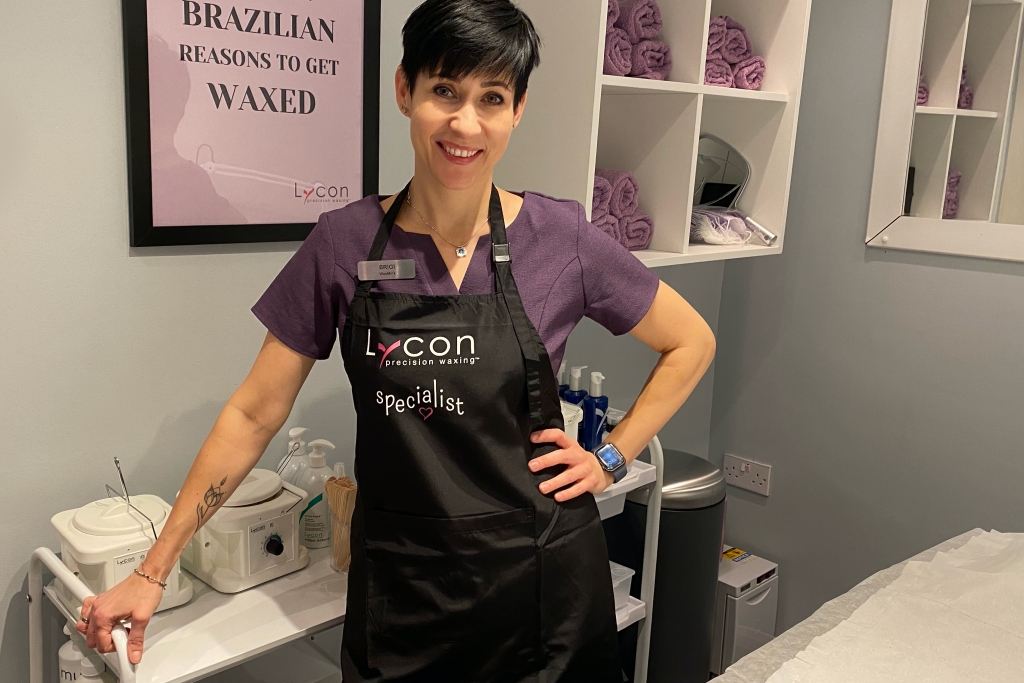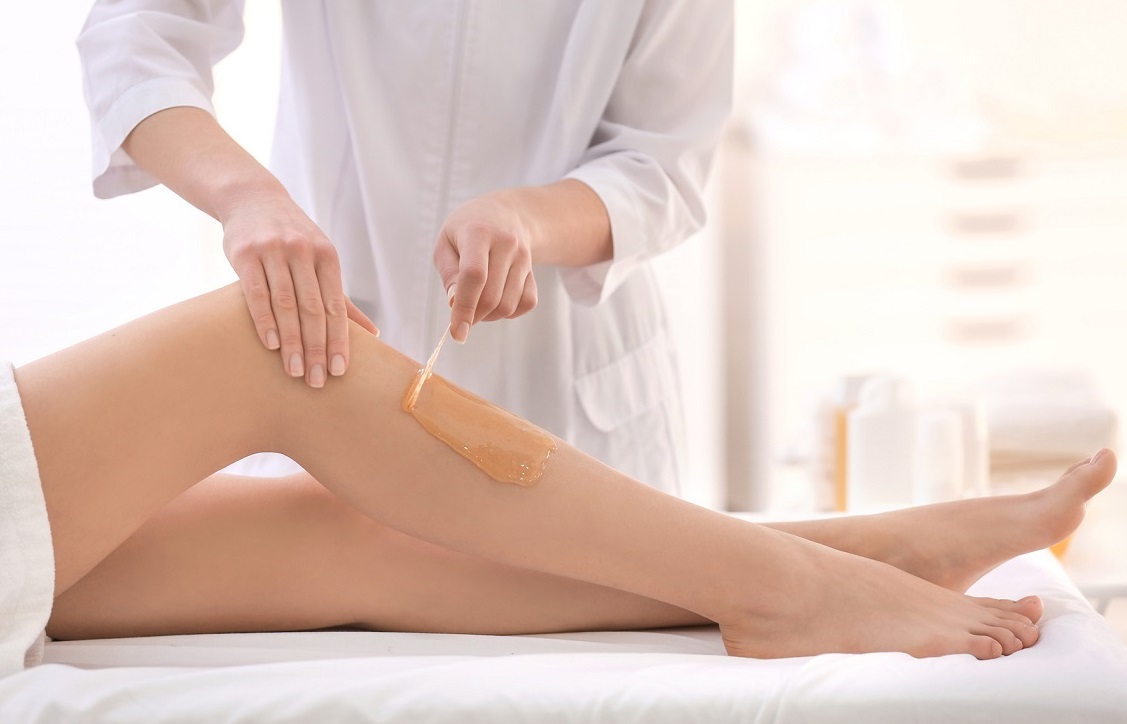The desire for silky smooth, hairless skin goes back to ancient times. It is something that has always been sought after and it is not going out of fashion any time soon either. So let’s check out how you can have the best waxing experience or waxperience as I like to call it.
I am Brigi, a Level IV Beauty Therapist with 10+ years experience and I collected 10 of my best ‘out of real-life’ tips for you to have a great waxing experience.

Waxing is one of the most established and effective methods for long-lasting hair removal, and let me tell you, once you experience professional waxing, you will never go back to shaving.
Many are anxious to get started with waxing as they are worried that it might be painful, whilst in reality, when done properly by a professional, you have nothing to worry about, as they will make sure your experience is as smooth as your skin after the treatment.
Check out these 10 tips that will help you elevate your waxperience to a whole new level… You will never question whether you’ll choose waxing or something else for hair removal after reading these!
1. Search for an Experienced and Qualified Professional
From my experience, I found that the most important factor when choosing where to get my waxing done is to choose someone who knows their business and is a master of their trait. I would make sure they qualified and professionally trained, not someone who started yesterday off from YouTube. They should be knowledgeable about not only all of the procedures but also about the product they are using.
By this, I mean that they should be using industry-standard / high-quality waxing products, not some cheap wax off of Amazon. Cheap products can cause irritation, itchy and bumpy skin. Trust me, there is a huge difference between cheap and high-quality wax, and once you use a professional product you will never go back to cheap wax again!
A professional will prep your skin before waxing and will also know how to treat the skin after waxing. This is what makes for a great waxperience.
2. Out of Period
Waxing when done professionally, is not something that should be painful. However, from my experience, most women tend to be a little bit more sensitive before their period which is completely normal. I mean, sometimes we don’t want to talk to anyone, let alone get waxing done.
If you happen to fall into this category, then I would recommend getting waxing done after your period. However, if you aren’t someone who gets sensitive, then feel free to get waxing done before or even during your period. It is an individual decision, as the therapist will always ensure that you will have a smooth experience.
If you decide to go for waxing during this time, I would recommend using a tampon and would let the professional know so that they can be extra careful.
3. Hair Length
In any wax treatment, hair length plays an important role. It’s a common misconception that you need to grow your hair out for months before getting a wax, but that is not true. From my experience, I would recommend the hair to be at least 2mm long.
4. Skin Preparation
Before getting waxed, skin preparation is crucial. If your skin is a bit dry, the strip wax can actually work as an exfoliant because it removes the dead skin layer too. That’s the reason why your skin is so smooth post-waxing. However, if your skin is very dry, itchy or irritated, then the wax can actually cause irritation. Don’t be discouraged though if this is the case… all this means that you need to prepare your skin.
My suggestion would be to use a thick body lotion for a few days before the treatment (not on the day though). This will help normalise the skin and will make for a smoother waxperience.
Of course, if you have any cuts, warts, recent abrasions, sunburn or something similar, you should not get that part of your body waxed. If you are ever unsure, just follow your common sense. Of course, once your skin has healed you can get it waxed without a problem.
Something else to bear in mind is if your skin is sensitive due to some kind of medication that you are taking, e.g. Roaccutane, which helps regulate the sebaceous glands but also dries the skin at the same time, then they should avoid wax treatments until they stop taking the medication.
5. Decide your Specific Areas
Before you visit any waxing salon, make sure you know exactly what areas you would like to get waxed. A lot of the times salons run on tight schedules and even small changes to the expected treatment can cause delays for the rest of the day.
Of course, no therapist wants to deny a treatment but sometimes it can be unfeasible to add another treatment to what you have already got booked.
6. Contradictions
As mentioned earlier, the skin needs to be prepared prior to waxing, but you should know that there are a few restrictions and contraindications to waxing:
If you are taking Roaccutane, waxing is not an option as the skin becomes very fragile and thin under its usage. Furthermore, waxing needs to be avoided for the following 6 months after you have finished taking it.
If you have undergone chemotherapy or if you are diabetic, the skin can be very thin, itchy and irritated with wounds. However, with the right skincare regime, it can be kept at bay.
Waxing can be and will be adjusted should you have any other skin problems such as recent scars, wounds, warts, oedema, sunburns, cuts, abrasions or fresh tattoos/piercings. In these cases, the area itself will be avoided, but the area around it could be treated. You will find out what you can and can’t wax during your consultation.
7. Distraction
I know that waxing is not quite like having a massage, but it really isn’t as bad as some people make it out to be. Everyone has different tolerance levels and I have found that if you are a bit more sensitive then using some form of distraction will help you with the treatment.
Reading a book, or watching something on Netflix on your phone can be a very good idea and trust me, the therapist will not only understand but will also probably encourage it.
8. Aftercare Guidelines
You should never overlook using aftercare products once you are done with the waxing treatment. Everyone’s skin responds to waxing in different ways. The waxed area could sometimes be red or a little sore after the treatment but that is perfectly normal so do not worry about it.
After waxing, the therapist will usually clean the area and apply some form of soothing lotion. This is important as it will calm your skin, and for this reason, you should apply some aloe vera or a special Lycon soothing cream, for a few days after waxing.
For the next few days you should not be doing anything which could possibly irritate your skin. Do not use a sauna, bath, and avoid exercise for a day.
9. Garments
To reduce any possible soreness or irritation I would recommend you wear loose and unfitted clothing when you come for your waxperience. Try to avoid fitted and tight clothing such as skinny jeans as they will not let your skin breathe and heal.
10. Avoid using a razor
It is possible that you might start noticing some tiny hair growth a few weeks after a waxing treatment. This is because hair does not grow at the same pace everywhere. Perhaps some hair was just underneath the skin when you came for your waxing and therefore they were not affected by waxing.
Trust me I know how frustrating it can be, but resist the temptation of removing these with a razor. The reason for this is that your hair will become prickly. When hair grows normally, the ends of the hair shaft will be thin and soft. In comparison, using a razor will encourage thicker texture of hair growth.
And remember, once you get into getting a routine of waxing, your hair growth cycle will align and you will have smooth, hairless skin for even longer.
To experience a professional waxing treatment and get smooth on the outside, confident on the inside and sassy all over, call 020 7111 0803 to book an appointment.

